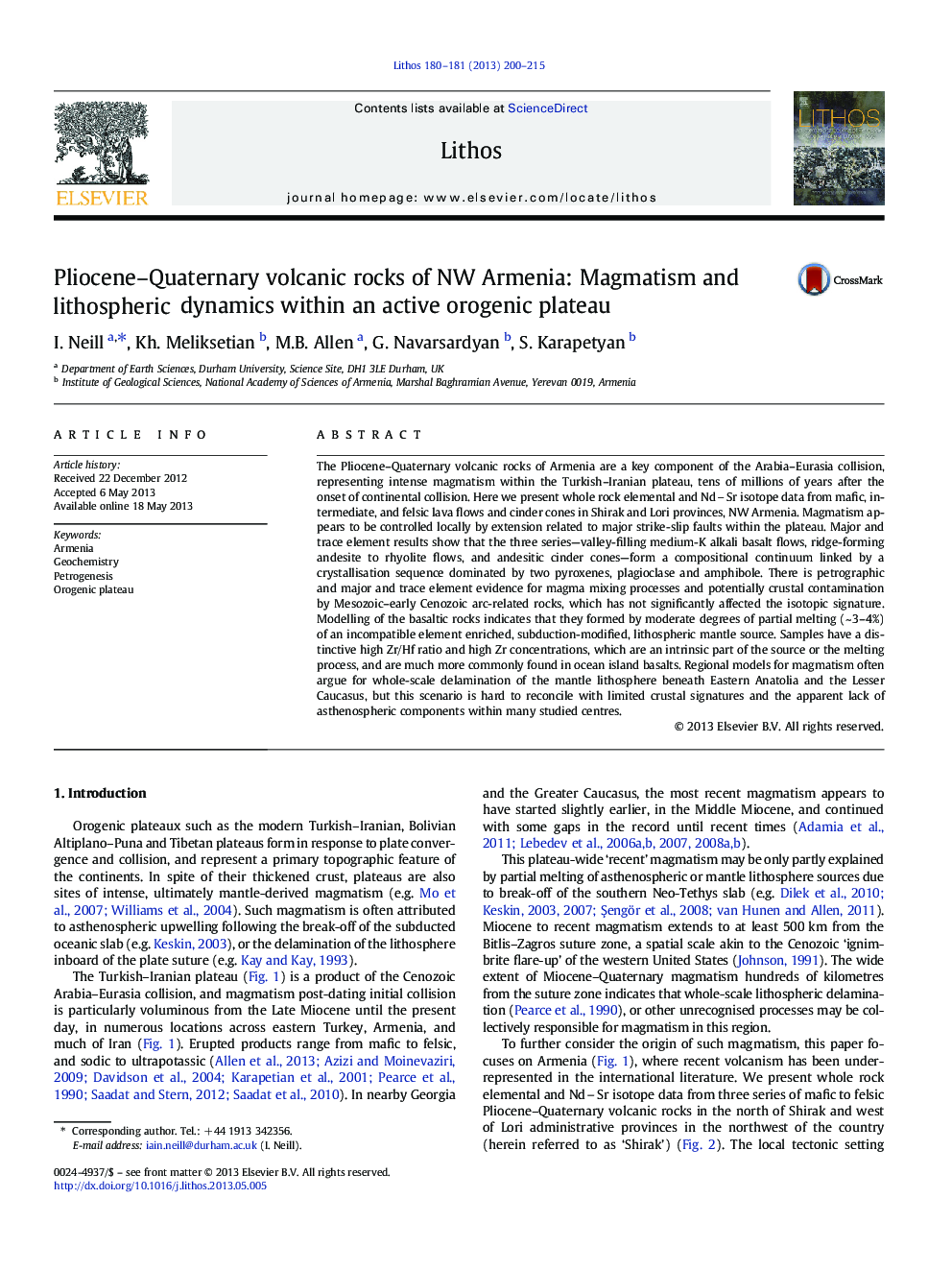| Article ID | Journal | Published Year | Pages | File Type |
|---|---|---|---|---|
| 4716165 | Lithos | 2013 | 16 Pages |
•Whole-rock study of Pliocene–Quaternary lavas from the Armenian Highlands•Compositional range controlled by fractional crystallisation, magma mixing and possible crustal contamination•Low-degree melting of a shallow metasomatised lithospheric mantle source•Exploring triggers for increase in magmatic activity since 10 Myr during Arabia-Eurasia collision
The Pliocene–Quaternary volcanic rocks of Armenia are a key component of the Arabia–Eurasia collision, representing intense magmatism within the Turkish–Iranian plateau, tens of millions of years after the onset of continental collision. Here we present whole rock elemental and NdSr isotope data from mafic, intermediate, and felsic lava flows and cinder cones in Shirak and Lori provinces, NW Armenia. Magmatism appears to be controlled locally by extension related to major strike-slip faults within the plateau. Major and trace element results show that the three series—valley-filling medium-K alkali basalt flows, ridge-forming andesite to rhyolite flows, and andesitic cinder cones—form a compositional continuum linked by a crystallisation sequence dominated by two pyroxenes, plagioclase and amphibole. There is petrographic and major and trace element evidence for magma mixing processes and potentially crustal contamination by Mesozoic–early Cenozoic arc-related rocks, which has not significantly affected the isotopic signature. Modelling of the basaltic rocks indicates that they formed by moderate degrees of partial melting (~ 3–4%) of an incompatible element enriched, subduction-modified, lithospheric mantle source. Samples have a distinctive high Zr/Hf ratio and high Zr concentrations, which are an intrinsic part of the source or the melting process, and are much more commonly found in ocean island basalts. Regional models for magmatism often argue for whole-scale delamination of the mantle lithosphere beneath Eastern Anatolia and the Lesser Caucasus, but this scenario is hard to reconcile with limited crustal signatures and the apparent lack of asthenospheric components within many studied centres.
